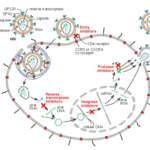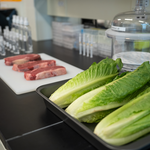Genetics & Molecular Biology

Antiviral drugs are generally considered to be a 20th century invention. But recent research has uncovered an unexpected facet to your immune system: It can synthesize its own antiviral molecules in response to viral infections.
My laboratory studies a protein that makes these natural antiviral molecules. Far from a modern human invention, nature evolved cells to make their own “drugs” as the earliest defense against viruses.
How antivirals work
Viruses have no independent life cycle – they are completely dependent on the cells they infect to supply all the chemical building blocks needed…

CRISPR/Cas9 technology has led to a “homing gene drive system” based on a specific
Drosophila suzukii gene called doublesex that can suppress populations of D. suzukii
vinegar flies – the “spotted-wing Drosophila” that devastate soft-skinned fruit in North America, Europe and parts of South America.
Even if further testing validates it, there will be a tough time getting it through the current US regulatory system. CRISPR stands for “clustered regularly interspaced short palindromic repeats” and Cas9 is an enzyme that performs like molecular scissors to cut DNA. CRISPR systems are…

The complexities of the human brain and its underlying genetic and biological mechanisms are truly fascinating. A recent study by scientists at Aarhus University sheds new light on the genetic factors underlying attention-deficit/hyperactivity disorder (ADHD), a common neurodevelopmental disorder affecting millions of people worldwide. By studying over six million genetic variants in nearly 40,000 people with ADHD and almost 187,000 without ADHD, the researchers identified 27 genetic risk variants for the disorder. These risk genes are expressed in the brain and neurons, particularly…

Imidazole dipeptides have been been linked to beneficial effects such as relieving fatigue and, with far less credibility, preventing dementia, and a new study has found that 2-oxo-imidazole-containing dipeptides (2-oxo-IDPs), which have one more oxygen atom than normal imidazole dipeptides, are the most common variety of imidazole dipeptides derivatives in the body.
Since the correlation, and it is only correlation, not science, is that these antioxidants are why some people live better lives it is an interesting find. The researchers established a method for selective and highly sensitive…

Since the 1960s, antioxidant supplements have been promoted as a miracle cure and that has never been true - preventing oxidation too much would be as bad as not preventing enough - but luckily few supplements make coenzyme Q bioavailable at all. Evolution created a way for the energy factories of our cells, mitochondria, to be thrown out of balance by pills.
Yet they can be thrown out of balance by nature. Coenzyme Q is entirely natural, and a lack of it leads to mitochondrial diseases like Leigh syndrome. But short of experimentally replacing mitochondrial DNA, it is hard to modify. For…

Thanks to the fall armyworm, nearly all of Africa's maize crop is in jeopardy, finds a new study.
The new projection was made using 3,175 geo-tagged occurrences and factoring in physiological and climatological requirements to geographically assess its range. They showed that almost 92 percent of Africa’s maize growing areas can mean year-round growth of fall armyworm while 95 percent are suitable for that plus pests like the maize stalk borer, Western corn rootworm and Asiatic witchweed.
That is a worry since January of 2016, when outbreaks of fall armyworm were first found in Nigerian…

Food is not medicine, anyone claiming it is medicine is selling you something, like a diet plan, but nutrients can impact cancer cells.
How that applies consistently is unknown so a new tool hopes to create an exploratory method using mice. Mice don't translate well to humans, they are not little people, but they can exclude effects in humans and that has value also.
Metabolism is an overused word but it is not a thing, it instead refers to the set of processes that allow an organism to use nutrients from its environment in order to function. There are a lot of moving biological parts…

A new process uses harmless viruses that eat bacteria to form microscopic beads that can safely be applied to food and other materials to rid them of harmful pathogens such as E. coli. Though tiny, each bead is about one third the width of human hair, they have millions of bacteriophages.
Phages sound simple, proteins wrapped around a genome, which makes them customizable. To-date, though, they are also too unstable to gain traction in the corporate world, where consistency matters. These new sprayable disinfectants are food-safe and effective and don't have the stability issue. As is…

To help try and understand the evolution and origins of cell motility, researchers have created the smallest mobile lifeform ever.
Scientists introduced seven proteins, believed to be directly involved in allowing Spiroplasma bacteria to swim into a synthetic bacterium named syn3—through genetic engineering. syn3 was designed and chemically synthesized to have the smallest genomic DNA possible including the minimum essential genetic information required for growth from the smallest genomes of naturally occurring Mycoplasma bacteria.
This genetically re-engineered syn3 changed from its…

A metabolite that converts white fat cells (sometimes called “bad” fat) to brown fat (“good” fat) cells could lead to treatment metabolic conditions like cardiovascular disease plus lifestyle-preventable things like type 2 diabetes.
Obesity is best treated by caloric reduction and energy intake but it wouldn't exist at all if everyone could maintain energy homeostasis that easily, and obesity is fast closing on smoking as the top lifestyle disease killer in the world. Regardless of why diseases happen, with health care controlled by government a leaky bucket has become a leaky water…